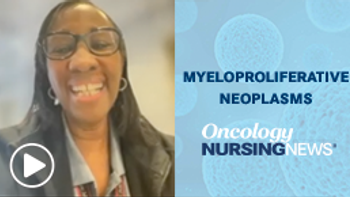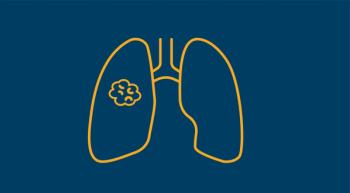
One expert explains the importance of deciphering the data obtained through wearable technology while aiming to avoid data fatigue in oncology nurses.

One expert explains the importance of deciphering the data obtained through wearable technology while aiming to avoid data fatigue in oncology nurses.

Leah Shaw, MSN, APRN, AGPCNP-BC; and Jessica Deinert, MSN, APRN, FNP-BC, share their clinical pearls in managing treatment-related adverse events in prostate cancer care.

Adding navitoclax to ruxolitinib improved spleen volume reduction, but not total symptom score in patients with myelofibrosis.

Durvalumab plus first-line chemotherapy, followed by maintenance treatment with durvalumab plus olaparib, emerges as a potentially effective combination for patients with limited treatment options.

Treatment with neoadjuvant nivolumab, followed by adjuvant nivolumab after surgery, led to significantly improved event-free survival in the first phase 3 perioperative study in patients with resectable non-small cell lung cancer.

Oncology nurses should have open communication with patients and closely monitor their hemoglobin levels when dealing with patients with myelofibrosis who have or may have anemia.

Oncology nurses must know about disease symptoms and patient comorbidities when treating individuals with myeloproliferative neoplasms.

ASP-1929, an antibody-dye conjugate, plus pembrolizumab, induced a 29.4% overall response rate in patients with recurrent or metastatic head and neck squamous cell carcinoma.

For patients with myelofibrosis receiving pacritinib, spleen volume reduction was associated with improved overall survival.

Patients with HER2-positive, metastatic colorectal cancer derived clinical benefit from a 5.4 mg/kg dose of trastuzumab deruxtecan.

Abbey Kaler, MS, APRN, FNP-C, CMSRN, demonstrated extraordinary oncology nursing by being a consistent champion of the patient’s voice.

Axicabtagene ciloleucel delivered superior overall survival compared with standard of care in patients with early relapsed or refractory large B-cell lymphoma.

In the phase 2 DESTINY-PanTumor02 trial, trastuzumab deruxtecan elicited clinical activity across a range of HER2 expressing solid tumors.

Over half of patients with lower-risk myelodysplastic syndrome treated with luspatercept achieved transfusion independence.

The pathologic complete response rate with durvalumab was 17.2% vs 4.3% with placebo, reflecting an absolute difference of 12.9%.

With a follow-up of 11.7 months, the estimated 12-month progression-free survival rate was 81% in patients who received neoadjuvant olaparib for BRCA-positive ovarian cancer.

Frontline ponatinib plus reduced-intensity chemotherapy yielded a higher minimal residual disease-negative complete remission rate than imatinib in the phase 3 PhALLCON study.

Neoadjuvant pembrolizumab elicited high clinical activity in patients with mismatch repair deficiency/microsatellite instability high solid tumors and was well tolerated.

Nilesh Kalariya, PhD, AGPCNP-BC, AOCNP, discusses key data of interest from the 2022 American Society of Hematology Meeting.

APRNs developed a discharge program which reduced readmission rates for patients receiving immunotherapy for advanced melanoma.

Holistic options like acupuncture and music therapy may benefit those undergoing cancer treatment.

Selpercatinib demonstrated a promising efficacy profile in patients with RET-fusion positive solid tumors.

Neoadjuvant cemiplimab elicited promising pathologic complete responses in patients with cutaneous squamous cell carcinoma.

The rate of event-free survival associated with pembrolizumab was significantly higher among patients with high-risk melanoma about to undergo surgery than among those who received immunotherapy following surgery.

A quality-of-life analysis of the pivotal Destiny-Breast04 trial showed that trastuzumab deruxtecan outperformed physician’s choice of treatment in delaying definitive deterioration.

In the phase 1 SURPASS trial, 72% of patients with solid tumors developed any-grade cytokine release syndrome following an infusion of ADP-A2M4CD8. The median time to resolution was 5 days.

Sherry Adkins, MSN, ANP-C, discusses some key considerations in ensuring quality patient care after they have completed CAR T-cell therapy at a specialized center.

Sherry Adkins, MSN, ANP-C, discusses the significance of incorporating CAR T-cell therapy regimens, such as lisocabtagene autoleucel, into earlier lines of treatment for patients with relapsed/refractory large B-cell lymphoma.

Because immune-related adverse events can be hard to diagnose, patient education and clear avenues of communication with an oncology care team are critical, according to investigators at the 2022 Pan Pacific Lymphoma Conference.

In this episode of The Vitals, Donna Herrera Bell, MSN, APRN, FNP-C, highlights how nurses can eliminate barriers to fertility discussions among adolescent and young adult patients with cancer.